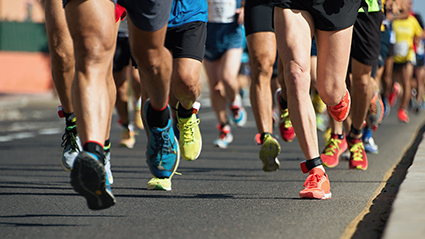Psychotherapy and Non-Medical Treatments for ADHD There are a number of behaviorally aimed therapies that can help lessen ADHD symptoms. These include:
- Cognitive Behavioral Therapy (CBT) is aimed at controlling behavioral symptoms of ADHD through discussion-based therapy sessions. In these sessions, patients work with therapists to identify problematic thought patterns and learn to think constructively through the disorder. This can help both patients and families better control the symptoms and promote change in behavioral patterns.
- Social skills training is aimed at assisting a child with ADHD in learning the importance of common social behaviors like basic manners, sharing, and waiting for a turn. This can be helpful in ensuring that the child functions normally in social settings and is able to make friends and acquaintances.
Medication Treatment for ADHD The same kinds of medications used to treat childhood ADHD are used for adults. The ages listed indicate FDA approval for the specified age group.
Stimulants According to the National Institute of Mental Health, although it may seem counterintuitive to treat hyperactivity with a stimulant, these medications actually activate brain circuits that support attention and focused behavior. Medications also may improve physical coordination.
Short – acting stimulants:
- amphetamine (Adderall) 3 and older
- dexmethylphenidate (Focalin) 6 and older
- dextroamphetamine (Dexedrine, Dextrostat) 3 and older
- lisdexamfetamine dimesylate (Vyvanse) 6 and older
- methamphetamine (Desoxyn) 6 and older
- methylphenidate (Ritalin) 6 and older
- methylphenidate patch (Daytrana) 6 and older
- methylphenidate (oral solution and chewable tablets) (Methylin) 6 and older
Extended release and long-acting stimulants:
- extended release amphetamine (Adderall XR) 6 and older
- extended release dexmethylphenidate (Focalin XR) 6 and older
- extended release methylphenidate (Metadate CD, Metadate ER, Ritalin SR) 6 and older
- long – acting methylphenidate (Ritalin LA, Concerta) 6 and older
Non – stimulant medications
- atomoxetine (Strattera) 6 and older
- guanfacine (Intuniv) 6 and older
Side Effects for ADHD Medications
According to the National Institute for Mental Health, most side effects of ADHD medications are minor and disappear when dosage levels are lowered.
Minor side effects include:
- Decreased appetite. Children seem to be less hungry during the middle of the day, but they are often hungry by dinnertime as the medication wears off.
- Sleep problems. If a child cannot fall asleep, the doctor may prescribe a lower dose. The doctor might also suggest that parents give the medication to their child earlier in the day, or stop the afternoon or evening dose. To help ease sleeping problems, a doctor may add a prescription for a low dose of an antidepressant or a medication called clonidine.
- Stomachaches and headaches.
- A few children develop sudden, repetitive movements or sounds called tics. These tics may or may not be noticeable. Changing the medication dosage may make tics go away. Some children also may appear to have a personality change, such as appearing “flat” or without emotion. Talk with your child’s doctor if you see any of these side effects.
Possible Rare, Serious Side effects: The National Institute of Mental Health reports that in 2007 the FDA required that all makers of ADHD medications develop Patient Medication Guides because a review of data found that ADHD patients with heart conditions had a slightly higher risk of the following:
- Strokes
- Heart attacks
- Sudden death
The review also found a slightly higher risk (about 1 in 1,000) for medication-related psychiatric problems in patients who had no history of psychiatric problems, such as:
- Hearing voices
- Having hallucinations
- Becoming suspicious for no reason
- Becoming manic.
In addition, the non-stimulant ADHD medication called atomoxetine (Strattera) carries a warning that children and teenagers with ADHD who take the drug are more likely to have suicidal thoughts than children and teenagers with ADHD who do not take atomoxetine. Call a doctor right away if your child shows any of the following symptoms:
- Acting more subdued or withdrawn than usual
- Feeling helpless, hopeless, or worthless
- New or worsening depression
- Thinking or talking about hurting himself or herself
- Extreme worry
- Agitation
- Panic attacks
- Trouble sleeping
- Irritability
- Aggressive or violent behavior
- Acting without thinking
- Extreme increase in activity or talking
- Frenzied, abnormal excitement
- Any sudden or unusual changes in behavior.













